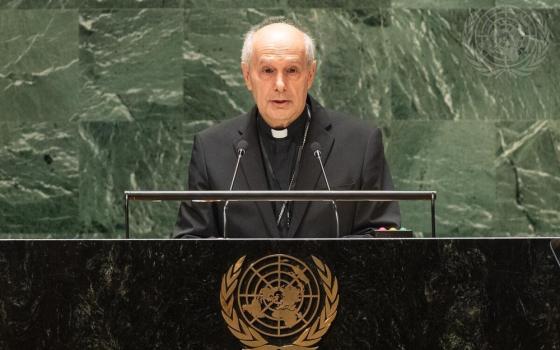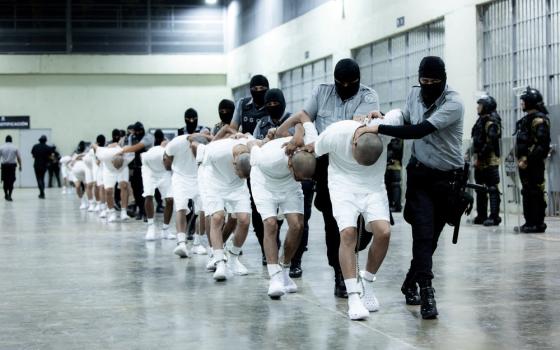Perhaps a trace of reality is beginning to insinuate itself into the hierarchy’s understanding of the clergy sex abuse scandal. Although it took him sometime to get to the point, Pope Benedict XVI, in a plane on the way to Portugal, described the crisis as “terrifying” and further stated unequivocally that the problem did not originate with sources outside the church or with the media but within the Catholic community.
A few days before, as John Allen notes here, Cardinal Christoph Schonborn of Vienna, in a clear breach of hierarchical protocol, directly accused another cardinal, Angelo Sodano, the secretary of state or number two figure in the Vatican, under Pope John Paul II, of complicity in covering up sex abuse allegations against the late Cardinal Hans Hermann Groer of Vienna. Schonborn told a news conference that Sodano had blocked an earlier investigation of Groer.
Sodano was also the figure who prematurely announced the end of a Vatican investigation of his good friend, the late Fr. Marcial Maciel, founder of the Legion of Christ, an order of priests. Maciel, a notorious abuser who also fathered at least one child, was a favorite of John Paul, who once declared him an “efficacious guide to youth.” Shortly before his death, Maciel was disciplined by Benedict.
These latest developments suggest that the Vatican may finally be moving beyond the symptom of sexual abuse by individual priests and bishops to the heart of the matter – the clerical culture that has attempted to cover up the mess and to lay the blame on all manner of things except the leaders themselves.
If the language seems to be changing it remains to be seen what actions will follow. It is easy to get lost amid the trees of details of individuals and horrific acts of abuse; of who knew what when. The details are important and significant, but so is the longer view, which begins to show the patterns of deceit, cover up and lack of accountability that allowed the crisis to fester and then to explode out of control.
It is possible in the long view to discern those patterns over the trajectory of the past 25 years, since the first stories began to surface in 1985. The patterns are discernible in the reactions of John Paul II, reactions that appeared based in a disdain for any institutions or processes outside of the secretive protocols and rules of a hierarchical culture that did not have to reveal its intentions to anyone. How else explain his inattention, until nearly the end of his reign, to the cries of victims, particularly those of his good friend Maciel, who ultimately made a mockery of the church and the priesthood?
It is heartening to hear the change in words and to see some candor, finally, at the highest levels of church leadership. But whether this latest phase results merely in a kind of ecclesial circular firing squad or leads to a more detailed critique and investigation of the causes of the crisis will depend a great deal on the tone and direction set by Benedict.
The scandal is, indeed, terrifying, given the damage it’s already done to the institution. More terrifying is the prospect that the candor will end at reform’s edge and that the scandal will continue to leap from country to country, lurching about, a rolling disaster with no commensurate response.




